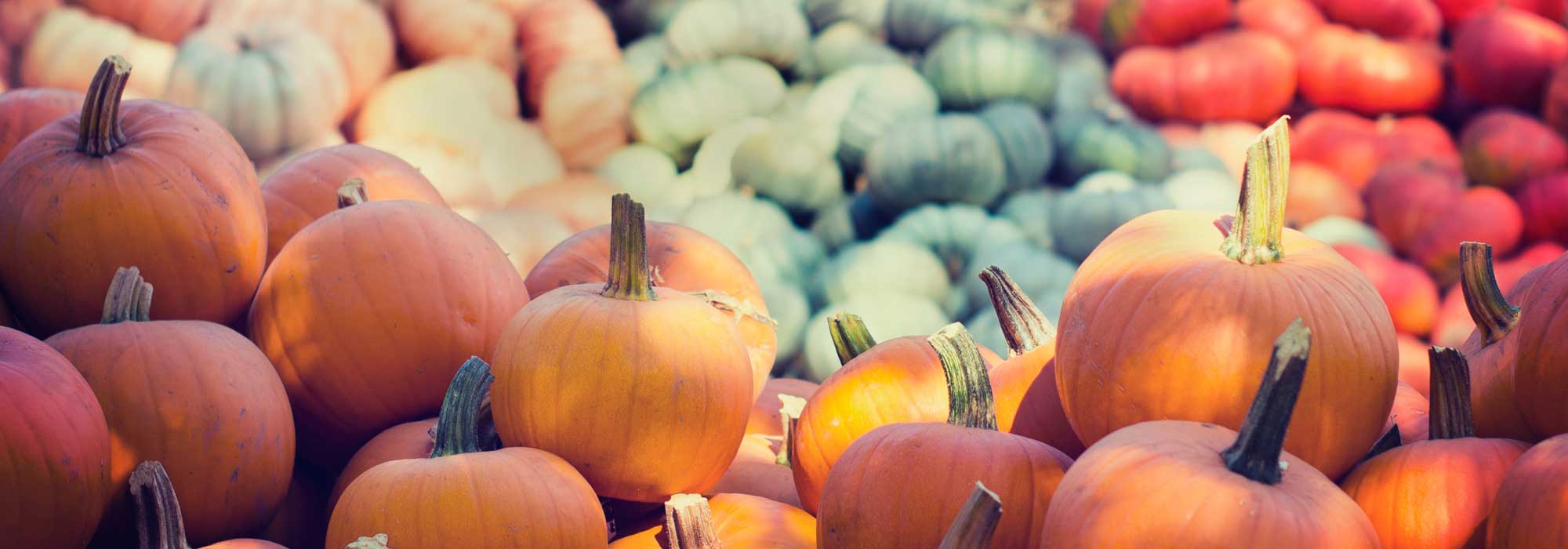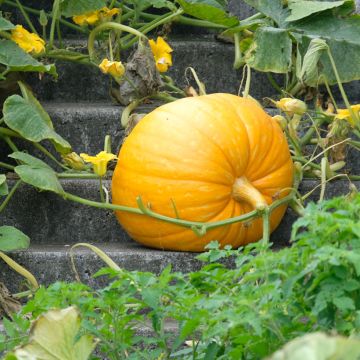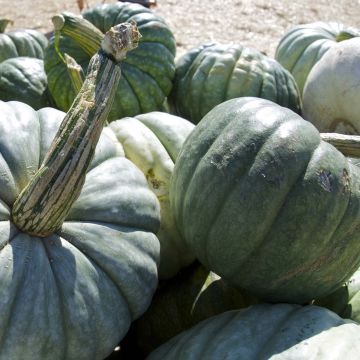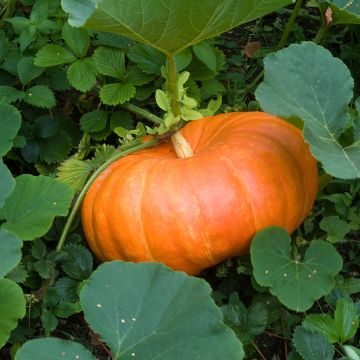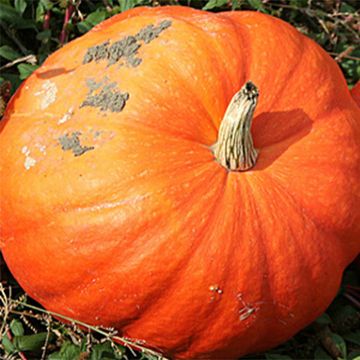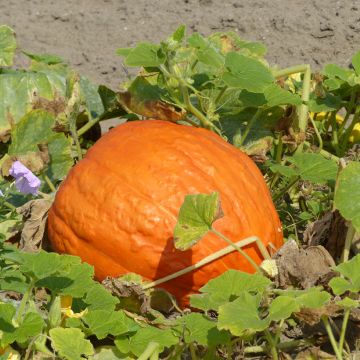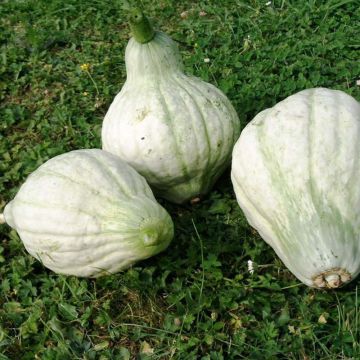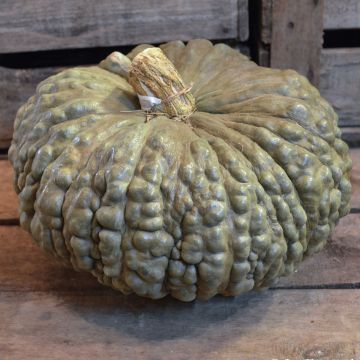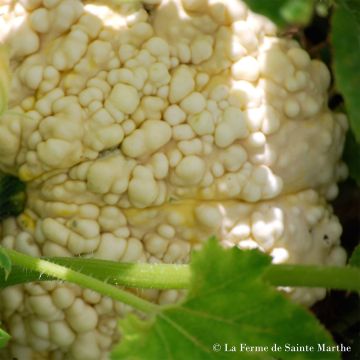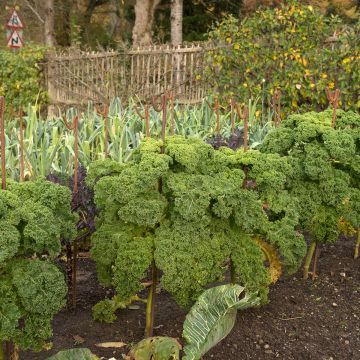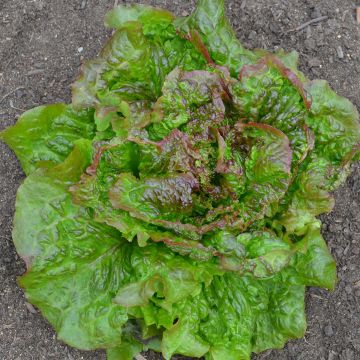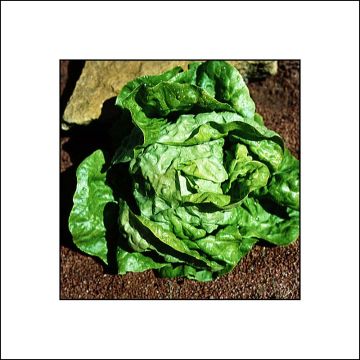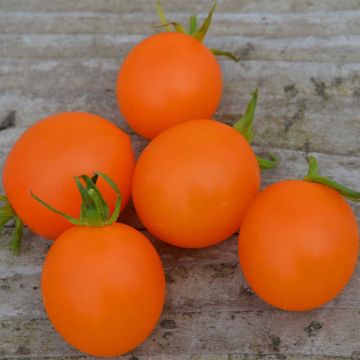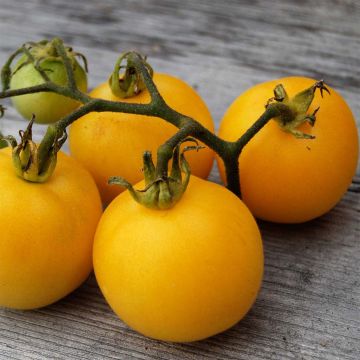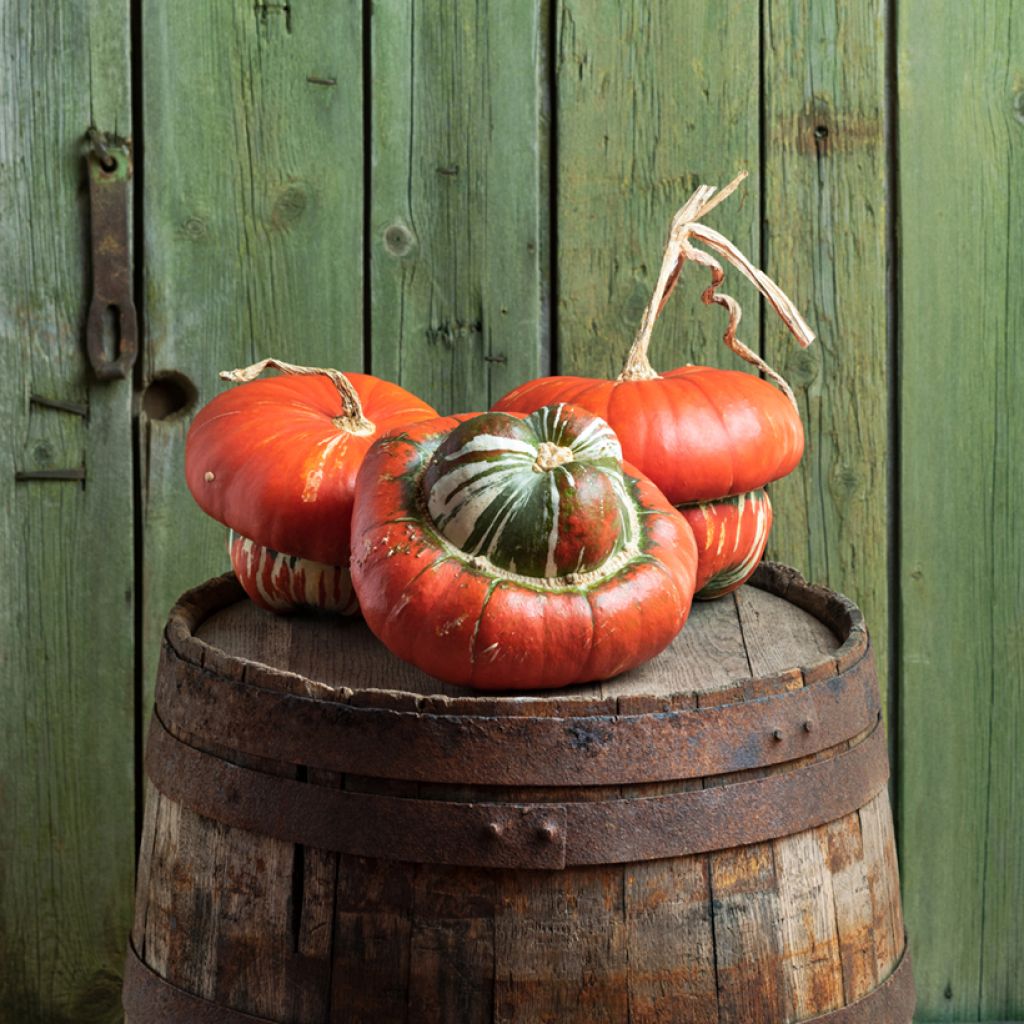

Squash Turks Turban - Ferme de Sainte Marthe Seeds
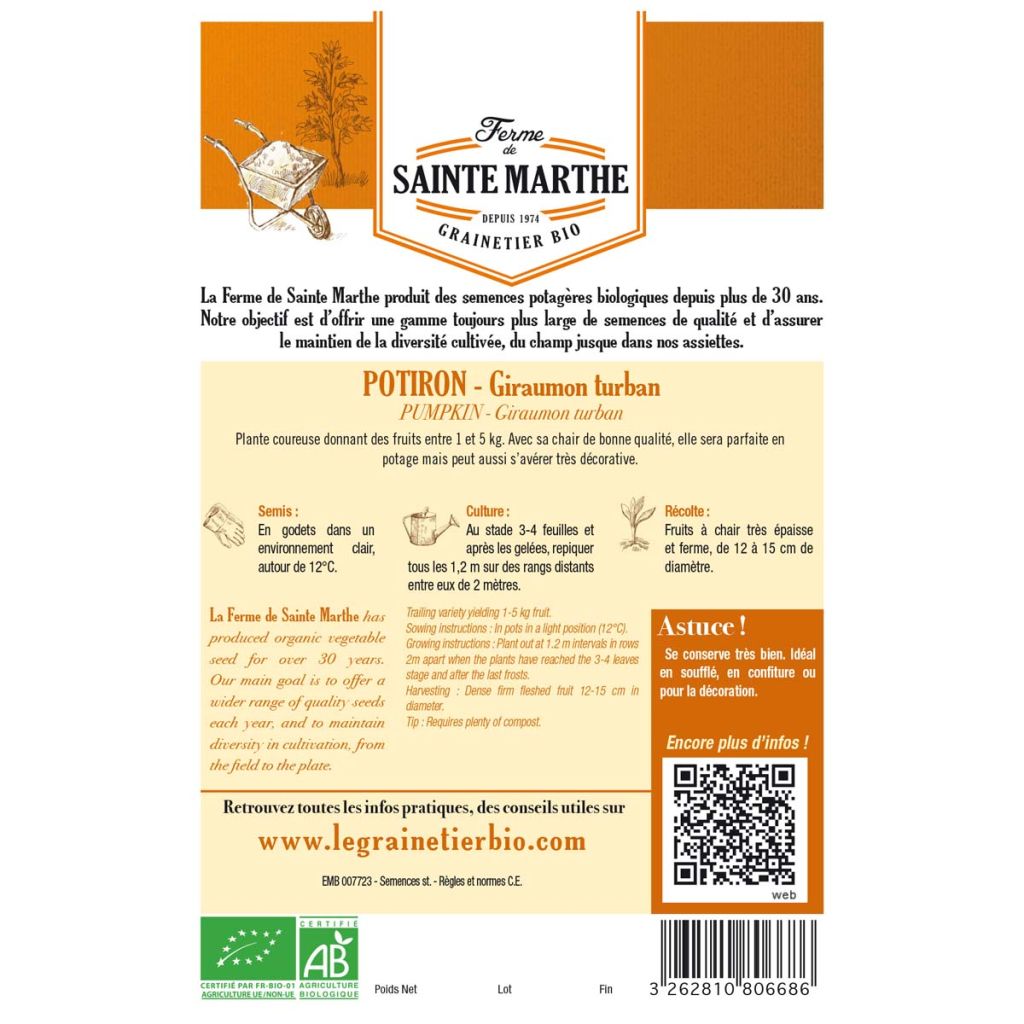

Squash Turks Turban - Ferme de Sainte Marthe Seeds
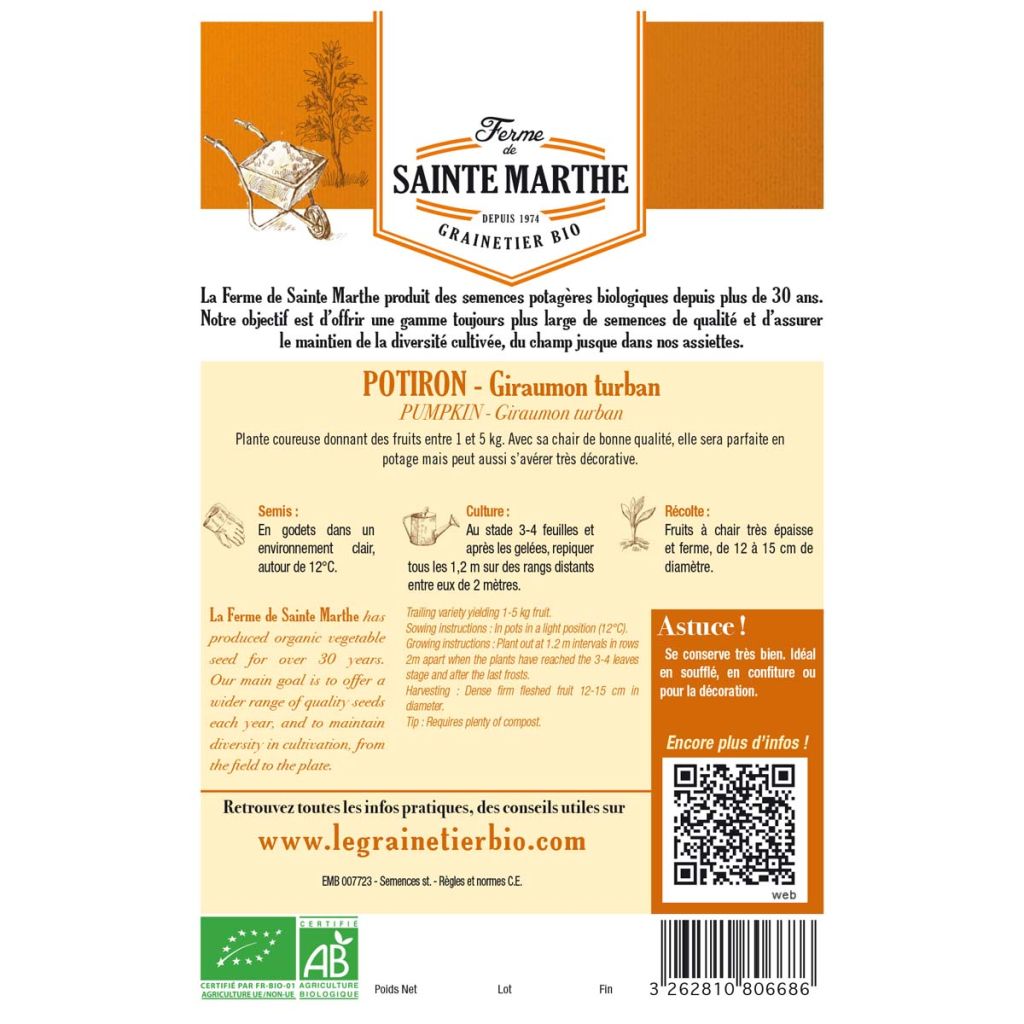

Squash Turks Turban - Ferme de Sainte Marthe Seeds
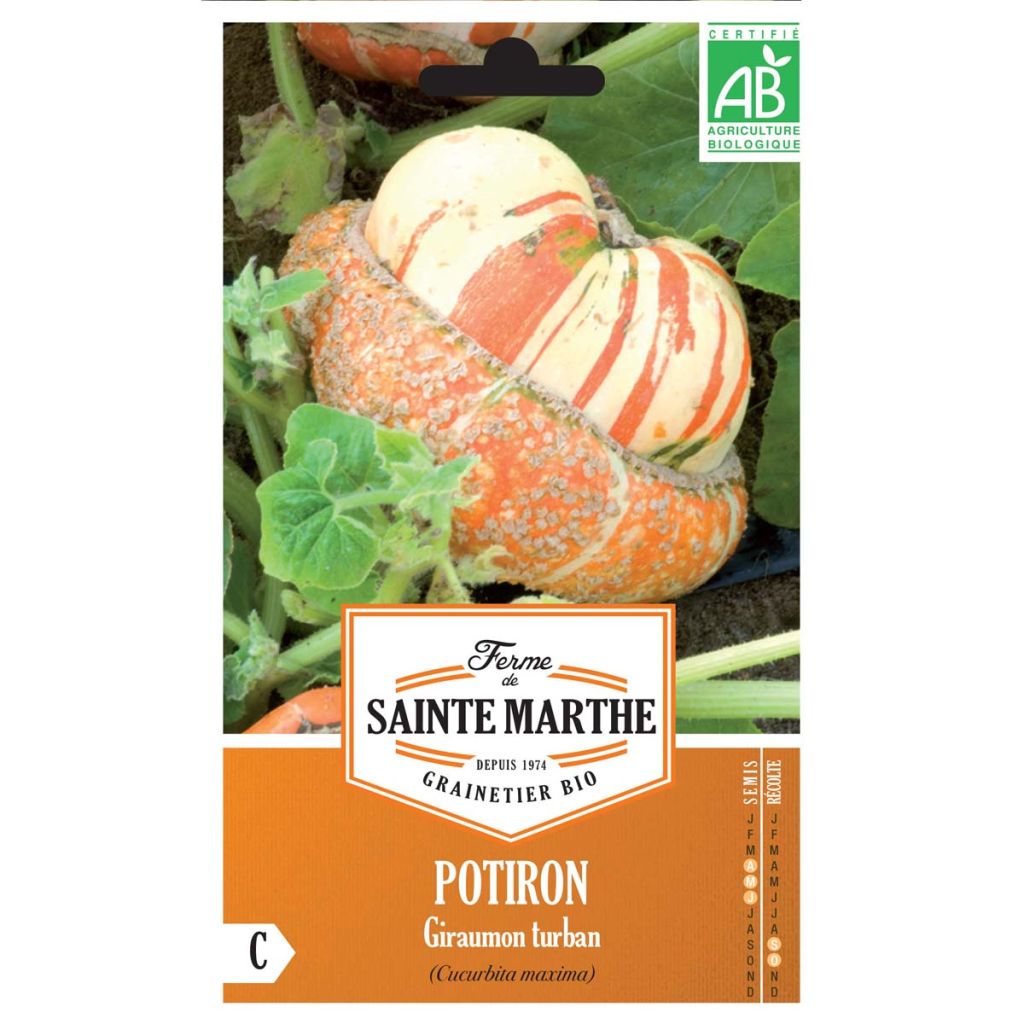

Squash Turks Turban - Ferme de Sainte Marthe Seeds
Squash Turks Turban - Ferme de Sainte Marthe Seeds
Cucurbita maxima Giraumon Turban
Squash
Well
didier couve, 28/04/2016
Special offer!
Receive a €20 voucher for any order over €90 (excluding delivery costs, credit notes, and plastic-free options)!
1- Add your favorite plants to your cart.
2- Once you have reached €90, confirm your order (you can even choose the delivery date!).
3- As soon as your order is shipped, you will receive an email containing your voucher code, valid for 3 months (90 days).
Your voucher is unique and can only be used once, for any order with a minimum value of €20, excluding delivery costs.
Can be combined with other current offers, non-divisible and non-refundable.
Home or relay delivery (depending on size and destination)
Schedule delivery date,
and select date in basket
This plant carries a 6 months recovery warranty
More information
We guarantee the quality of our plants for a full growing cycle, and will replace at our expense any plant that fails to recover under normal climatic and planting conditions.
Description
'Turk's Turban' Squash is a very unusual French heirloom variety that produces orange fruits topped with a variegated red, yellow, green and white cap. Great for decorating! The sweet, slightly floury orange flesh has good flavour. Each trailing vine yields 4 to 6 fruits (12 to 15 cm, 1 to 5 kg). Sow from March to June and harvest from September to November.
Orange, green, red, yellow, black or blue; smooth, ribbed, bumpy, hard-skinned, soft-skinned... Summer and winter squash comes in an astonishing array of shapes, colours and sizes due to their ability to hybridise easily. Winter squash refers to all pumpkins and squashes with tough skin and delicately sweet flesh. Summer squash, including courgettes (or zucchini), are different varieties that are harvested young, whilst the skin and seeds are still tender.
Both summer and winter squash are native to America and belong to the large Cucurbitaceae or gourd family (also known as cucurbits). They were introduced in Europe during the 16th century. The plants are generally annual vines that use tendrils for support. They are monoecious, meaning that both male and female flowers are produced on the same plant. Female flowers are easily identified by an inferior ovary located at the base of the flower, which will become a fruit when pollinated. The edible male squash blossoms are often harvested after pollination then fried or stuffed. The female flowers are edible too, however picking them will of course result in fewer fruits. Squash is a very versatile vegetable that is delicious roasted, in gratin or blended into delicious soups. Courgette is a staple ingredient in ratatouille, couscous and many other popular Mediterranean dishes. Both courgette and squash are low in calories and high in minerals and vitamins, especially provitamin A and vitamin B.
Harvesting: Squashes should preferably be harvested at full maturity, unless they are liable to rot when left on the plant. If this is the case, they can be brought indoors to finish their maturation. Courgettes are harvested whilst they are still young and tender. Handle summer and winter squash with care to avoid damaging the skin.
Storage: Courgettes do not store well because of their fine skin. It is possible to freeze them in slices for later use. Thick-skinned winter squashes will keep for several months and can be eaten all winter long. Unlike other fruits and vegetables, they store better in a warm, dry place. No need to store them in the dark: they are great to decorate the house during the colder months!
Good to know: Placing the squash fruits on top of a slate or roof tile will keep them from being in direct contact with the ground. This prevents them from rotting due to excessive humidity. Squash and courgette plants favour moist soil and benefit from mulching, especially during the hotter summer months. Both are very prone to powdery mildew (a fungal disease that causes a white down to form on the surface of the leaves). When watering, try to avoid getting water on the leaves or flowers. Grow your squash plants alongside alliums such as chives, onions or shallots or members of the Fabaceae family (formerly legumes) such as beans or peas. Avoid growing them next to cucumber plants.
Even if the vegetable garden is first and foremost a place for growing great quality veg, it’s always a good idea to leave a bit of room for flowers. Growing flowers alongside your vegetable plants will make your general gardening experience more enjoyable and is a great way to attract pollinators and repel garden pests! Flowers such as gaillardia, marigolds, zinnias, cosmos or nasturtiums can be sown in and around the rows of vegetables. Herbs such as dill can be very useful also. Bear in mind that some companion plants self-seed easily and can be a bit invasive (borage, chives, lemon balm etc.)
NB. Organic seeds (in French "AB" for "Agriculture Biologique") are produced from plants that aren't treated with phytosanitary products (insecticides, weed killers). The seeds do not undergo post-harvest treatment. They carry the AB label and are approved by Ecocert, an independent structure.
Harvest
Plant habit
Foliage
Botanical data
Cucurbita
maxima
Giraumon Turban
Cucurbitaceae
Squash
Cultivar or hybrid
Annual
Other Pumpkin seeds
View all →Planting and care
Preparation
Cucurbits thrive in rich, deep, loose soil. Dig a hole at least 40 cm in all directions and fill it with well-rotted manure and/or compost. In addition to good fertilisation, they will need plenty of water, warmth, and space (at least 1 square metre).
Sowing
Before sowing, you can soak the seeds for 24 hours in a little water to stimulate germination.
Either, 3 weeks before transplanting, under a cold frame or in warmth (16 to 30°C), from March onwards, sow 2 or 3 seeds per bucket or container large enough for root development. Germination will occur 3 to 5 days later. Keep only the most vigorous young plant. Plant outdoors after mid-May, once all risk of frost has passed. It is important not to sow too early, as the young plants may become leggy and/or their overly developed root system may not withstand transplantation.
Or, from mid-May onwards, sow directly in place, in groups of 3 seeds, once frosts are no longer a concern and the soil has warmed up. Thin out after 2 to 3 weeks, keeping only the most vigorous young plant. Cover the soil with organic matter (compost, grass clippings, leaves…), which will help keep the soil cool.
Watering
From sowing or planting onwards, water generously, taking care not to displace the seeds, then regularly during fruit formation. However, once the fruits have formed, during ripening, limit watering.
Seedlings
Care
Intended location
Planting & care advice
-
, onOrder confirmed
Reply from on Promesse de fleurs
Similar products
Haven't found what you were looking for?
Hardiness is the lowest winter temperature a plant can endure without suffering serious damage or even dying. However, hardiness is affected by location (a sheltered area, such as a patio), protection (winter cover) and soil type (hardiness is improved by well-drained soil).

Photo Sharing Terms & Conditions
In order to encourage gardeners to interact and share their experiences, Promesse de fleurs offers various media enabling content to be uploaded onto its Site - in particular via the ‘Photo sharing’ module.
The User agrees to refrain from:
- Posting any content that is illegal, prejudicial, insulting, racist, inciteful to hatred, revisionist, contrary to public decency, that infringes on privacy or on the privacy rights of third parties, in particular the publicity rights of persons and goods, intellectual property rights, or the right to privacy.
- Submitting content on behalf of a third party;
- Impersonate the identity of a third party and/or publish any personal information about a third party;
In general, the User undertakes to refrain from any unethical behaviour.
All Content (in particular text, comments, files, images, photos, videos, creative works, etc.), which may be subject to property or intellectual property rights, image or other private rights, shall remain the property of the User, subject to the limited rights granted by the terms of the licence granted by Promesse de fleurs as stated below. Users are at liberty to publish or not to publish such Content on the Site, notably via the ‘Photo Sharing’ facility, and accept that this Content shall be made public and freely accessible, notably on the Internet.
Users further acknowledge, undertake to have ,and guarantee that they hold all necessary rights and permissions to publish such material on the Site, in particular with regard to the legislation in force pertaining to any privacy, property, intellectual property, image, or contractual rights, or rights of any other nature. By publishing such Content on the Site, Users acknowledge accepting full liability as publishers of the Content within the meaning of the law, and grant Promesse de fleurs, free of charge, an inclusive, worldwide licence for the said Content for the entire duration of its publication, including all reproduction, representation, up/downloading, displaying, performing, transmission, and storage rights.
Users also grant permission for their name to be linked to the Content and accept that this link may not always be made available.
By engaging in posting material, Users consent to their Content becoming automatically accessible on the Internet, in particular on other sites and/or blogs and/or web pages of the Promesse de fleurs site, including in particular social pages and the Promesse de fleurs catalogue.
Users may secure the removal of entrusted content free of charge by issuing a simple request via our contact form.
The flowering period indicated on our website applies to countries and regions located in USDA zone 8 (France, the United Kingdom, Ireland, the Netherlands, etc.)
It will vary according to where you live:
- In zones 9 to 10 (Italy, Spain, Greece, etc.), flowering will occur about 2 to 4 weeks earlier.
- In zones 6 to 7 (Germany, Poland, Slovenia, and lower mountainous regions), flowering will be delayed by 2 to 3 weeks.
- In zone 5 (Central Europe, Scandinavia), blooming will be delayed by 3 to 5 weeks.
In temperate climates, pruning of spring-flowering shrubs (forsythia, spireas, etc.) should be done just after flowering.
Pruning of summer-flowering shrubs (Indian Lilac, Perovskia, etc.) can be done in winter or spring.
In cold regions as well as with frost-sensitive plants, avoid pruning too early when severe frosts may still occur.
The planting period indicated on our website applies to countries and regions located in USDA zone 8 (France, United Kingdom, Ireland, Netherlands).
It will vary according to where you live:
- In Mediterranean zones (Marseille, Madrid, Milan, etc.), autumn and winter are the best planting periods.
- In continental zones (Strasbourg, Munich, Vienna, etc.), delay planting by 2 to 3 weeks in spring and bring it forward by 2 to 4 weeks in autumn.
- In mountainous regions (the Alps, Pyrenees, Carpathians, etc.), it is best to plant in late spring (May-June) or late summer (August-September).
The harvesting period indicated on our website applies to countries and regions in USDA zone 8 (France, England, Ireland, the Netherlands).
In colder areas (Scandinavia, Poland, Austria...) fruit and vegetable harvests are likely to be delayed by 3-4 weeks.
In warmer areas (Italy, Spain, Greece, etc.), harvesting will probably take place earlier, depending on weather conditions.
The sowing periods indicated on our website apply to countries and regions within USDA Zone 8 (France, UK, Ireland, Netherlands).
In colder areas (Scandinavia, Poland, Austria...), delay any outdoor sowing by 3-4 weeks, or sow under glass.
In warmer climes (Italy, Spain, Greece, etc.), bring outdoor sowing forward by a few weeks.






























